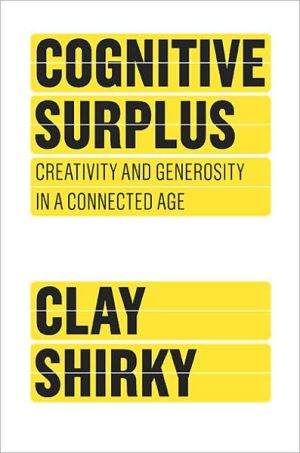Living Ethics: Across Media Platforms
In a seamlessly wired world of television, computers, and BlackBerrys, where does ethics fit in? To address that question, Living Ethics calls for a moral convergence to complement the technological one. Identifying principles that apply across media platforms, Michael Bugeja has created a thorough and well-researched work that avoids the prescriptive language used by many texts; instead, he encourages critical thinking through examples that build, challenge, and enhance readers' value...
Search in google:
In a seamlessly wired world of television, computers, and BlackBerrys, where does ethics fit in? To address that question, Living Ethics calls for a moral convergence to complement the technological one. Identifying principles that apply across media platforms, Michael Bugeja has created a thorough and well-researched work that avoids the prescriptive language used by many texts; instead, he encourages critical thinking through examples that build, challenge, and enhance readers' value systems.While many ethics texts focus almost exclusively on journalistic ethics, this award-winning text (recipient of the 2009 Clifford G. Christians Award for Research in Media Ethics) emphasizes unifying principles that collapse and transcend the boundaries of a wide variety of media sources—including newspapers, magazines, radio, television, public relations, photojournalism, advertising, and other forms of traditional and online mass communication. As readers will discover, the circumstances of ethical issues may vary, but the moral processes used to resolve them are basically the same. Resolutely practical, Living Ethics is written in a clear and cogent style that helps readers:• Understand unifying principles from historical, philosophical, and political perspectives • Grasp the utility of principles that engage audiences and clients while respecting the diverse cultures in an increasingly global media environment • Explore moral convergence through the eyes of more than 100 practitioners at major newsrooms, agencies, and organizations • Examine ethical issues visually through more than 20 photos and illustrations • Develop a set of principles to guide their careers across a multitude of platforms
Preface IntroductionPart One: Building Your Ethical Base 1. Influence Basic Concepts Basic Intentions Basic Influences The Influence of History The Influence of LanguageIllustration: "Trigger Words"Balance and PerceptionIllustration: "The Fine Line of Objectivity"Photograph: "Father Holding Son, Who Nearly Drowned," Jared Lazarus Journal Exercise—"Deprogramming Your Influences"2. Responsibility Basic Concepts Honoring Accountability Role Models, Mentors, Icons and Idols Broader ResponsibilitiesPhotograph: "Editors at the Mailbag," Highlights for ChildrenMoral Relativism and Absolutes First Principles Journal Exercise—"You're Absolutely Courageous"3. Truth Fonts of Truth Objectivity as a Process Truthful Platforms Truthful Disclosures Visual Judgment CallsPhotograph: "Grieving Family and Friends," Morris L. ManningPhotograph: "Flight Nurse," Dennis ChamberlinPhotograph: "Marine Funeral," Dennis ChamberlinPhotograph: "Couple Kissing," Dennis ChamberlinPhotograph: "Magdalena," Dennis ChamberlinPhotograph: "Lanier," Dennis Chamberlin A Word about SatireEditorial Cartoon: "An Army of One," Jim BorgmanEditorial Cartoon: "NASA," Carmen CerraIllustration: "Bunny BioTM—Behind the Fur, Energizer BunnyTM"Higher Concepts Journal Exercise—"Your Highs, Lows and Turning Points"Part Two: Testing Your Ethical Base 4. Falsehood Basic Concepts Categories and Consequences A Word About Quote-Making Visual LiesPhoto/Illustration: "Crossing the Line in Photojournalism," Diane Bugeja Questionable Lies Journal Exercise—"Just How Truthful Are You?"5. Manipulation Basic Concepts Brief History of the Hoax Categories and Consequences Defusing the Hoax Hoaxbusting Methods Journal Exercise—"Your Biases, Fears and Convictions"6. Temptation Dealing with Temptation A Plagiarism Primer Detecting Plagiarism Dealing With Conflicts of InterestNew Media ConflictsCompassionate ConflictsReligious and Familial ConflictsEditorial vs. Advertising ConflictsDiversity ConflictsVisual ConflictsPhotograph: "Brian," John Kaplan Journal Exercise—"Your Own Conflict Resolution"7. Bias Exploring Bias Exploring Stereotypes Dealing with BiasIllustration: "Anticipated vs. Received Message"Journal Exercise—"Taking Stock: Your Personal Bias Barometer"Part Three: Enhancing Your Ethical Base 8. Fairness The Fairness Process Fairness-Related ConceptsCorrections and apologiesDiscretionJournal Exercise—"Do You or Others Play Fair or Foul?"9. Power Power BasesPower of the Press vs. ProfitsCensorship vs. Self-CensorshipTaste vs. Free ExpressionIllustration: "Child's Subliminal Ad"EmpowermentTwo Cases of Sexual HarassmentCompassionPhotograph: "A Policeman's Torment," John KaplanPhotograph: "Floodwaters from Hurricane Katrina," AP photo/Vincent LaforetEssay: "Ode to New Orleans," by Charlotte PorterPhotograph: "Roadside Memorial," by Diane BugejaPhotograph: "Final Moments," by Therese FrareEssay: "Lasting Moments," by Therese Frare Journal Exercise—"Your Path to Empowerment"10. Value Systems Personal and Professional Standards Creating CodesPhotograph: "A Sampling of Codes"Journal Exercise—"Your Own Code of Ethics"Bibliography Index








